#nationwide horse transportation
Explore tagged Tumblr posts
Text
Horse Transportation in California For Secure and Effective Travel Your Animal Transportation
When it comes to transporting horses, security, consolation, and unwavering quality are vital. Whether you're moving a single horse California, over the country, choosing a proficient horse transportation benefit is key. services guarantee that your horse's travel is smooth and stress-free.
Why Select Proficient Horse Transportation?
Horses are profitable resources, not fair monetarily, but too as companions, competitors, and laborers. When Horse Transportation California for an appearance, breeding, or movement, guaranteeing their security, wellbeing, and consolation ought to be your best need. Proficient horse transportation services offer a assortment of highlights and benefits:
Expertise in Dealing with Equines: Prepared drivers and staff guarantee the secure and comfortable stacking and emptying of horses. They are commonplace with the particular needs of distinctive horse breeds and sorts, which is pivotal to guaranteeing their well-being amid the journey.
Specialized Hardware: Not at all like conventional vehicles, specialized horse transport vehicles are planned for equine security. These vehicles are fitted with slows down that give plentiful space, appropriate ventilation, and cushioning to avoid injury.
Health and Security Checking: Legitimate transportation companies will screen your horse's wellbeing amid travel, guaranteeing that nourishment, water, and rest breaks are given at standard intervals. This is particularly critical amid long journeys.
Peace of Intellect: Proficient horse transporters have protection scope, giving you peace of intellect in case of startling issues. Your horse is treated like an esteemed traveler, not fair cargo.

Horse Transportation in California
California is domestic to a wealthy equestrian culture, with a wide assortment of disciplines such as hustling, rodeo, and path riding. Whether you require to transport a racehorse from Santa Anita to Del Damage, a joy horse over the Sierra Nevada, or an appear horse from Los Angeles to San Francisco, horse transportation California caters to a wide extent of needs.
California’s Assorted Landscape: The state’s assorted geology presents special challenges for horse transport, from the level deserts in the south to the hilly locales in the north. Talented transporters know how to explore these challenges securely, guaranteeing your horse’s consolation no matter the terrain.
Urban and Rustic Transportation: With both urban zones like Los Angeles and rustic districts scattered all through California, horse transportation companies offer custom-made services to fit the particular needs of each zone. Whether you’re managing with active city activity or long provincial courses, horse transporters are prepared to handle both.
Nationwide Horse Transportation
For proprietors who require to transport horses over state lines, across the Nationwide horse transportation services give a proficient and secure arrangement. Across the nation services offer long-distance courses over the nation, counting major equestrian occasions and regular migrations. These services are especially valuable for:
Racehorses and Appear horse: horses competing in national occasions or hustling circuits frequently require to be transported to diverse areas. Across the nation horse transportation services give proficient, opportune, and secure conveyance to and from events.
Relocations: Whether you’re moving to a modern state or basically taking a excursion with your horse, solid across the country transport guarantees your equine companion’s travel is stress-free.
Breeding and Deals: Horse breeders and dealers frequently depend on across the country transport services to securely provide horses to buyers or breeders over the country.
Professional transport services incorporate climate-controlled trailers, exact course arranging, and experienced drivers who specialize in across the nation equine transportation. This guarantees that your horse remains secure and comfortable, notwithstanding the distance.
Specialized Equine Transportation: Custom fitted to Your Horse’s Needs
Every horse is special, and specialized equine transportation services cater to the personal needs of your creature. This benefit goes past the normal "horse transportation" involvement and includes:
Custom Slows down: Specialized trailers permit for custom slow down sizes and arrangements to fit your horse's measure and consolation level. Bigger breeds or those with extraordinary needs may require a more roomy setup, and proficient transport services can oblige this.
Grooming and Care: A few services give extra care such as preparing, pharmaceutical organization, or indeed equine rub treatment to diminish stretch amid travel.
Emergency Back: In the improbable occasion of a crisis, specialized equine transporters have experienced staff and the essential hardware to handle the circumstance, guaranteeing your horse gets incite therapeutic consideration if needed.
Choosing the Right Horse Transport Service
When selecting a horse transportation supplier in California or for across the country transportation, it’s fundamental to select a company that offers polished skill, unwavering quality, and the most elevated benchmarks of care for your horse. Here are a few key components to consider:
Experience: Select a company with a demonstrated track record in equine transport. Experienced transporters get the needs of horses amid travel and can handle different challenges.
Reputation: Inquire about audits and tributes from other horse proprietors who have utilized the benefit. Word of mouth and criticism from the equestrian community can offer assistance when you make an educated decision.
Licensing and Protections: Guarantee that the transportation company is legitimately authorized and a safety net provider. This will allow you peace of intellect knowing that your horse is in secure hands.
Conclusion
Whether you're transporting horses locally California, over the United States, proficient horse transportation services give a secure, solid, and specialized arrangement for your equine needs. These services guarantee that your horse’s consolation, wellbeing, and security are prioritized, whereas advertising you peace of intellect. With the right transportation accomplice, you can rest assured that your equine companion will arrive at their goal securely and on time, prepared for anything enterprise or challenge lies ahead.
#Animal transportation#Horse transportation California#Nationwide horse transportation#Specialized Equine Transportation
0 notes
Text
Port Jervis, New York - A Historic Canal and Railroad Transport Hub

With roots as a pre-automobile transportation hub, Port Jervis, New York, is a historic burgh with a history of colonial settlement extending to the 1690s. Northeast of New York City, it’s situated amidst the fertile valleys of the Delaware and Neversink River systems. The valleys mark the boundary between the Appalachian Plateau and Shawangunk Mountains, and hundreds of miles of state and nationally-managed recreational lands surround it.
Initially known as Carpenter’s Point, Port Jervis was a landing point for timber raftsmen who plied the upper Delaware River. It was also a stop on the Old Mine Road, the country’s first 100-mile road (now United States Route 209), which took travelers south from Kingston.
Carpenter’s Point was incorporated into Deerpark in 1798. The locale was named Port Jervis in 1827, and it officially became a port of the Delaware River and Hudson Canal in 1828. As a repair point and boat basin, it formed an essential station on a 171-mile-long transportation network that brought anthracite coal from Pennsylvania’s northeastern mountains to New England and New York City. The name was in honor of the Hudson Canal’s chief engineer, John B. Jervis, from Rome, New York.
In 1847, Port Jervis became a hub for railroad operations and grew to house a main engine terminal facility while serving as the Delaware Division of the Erie Railroad’s headquarters. This property included the railroad’s primary maintenance and yard facilities.
Port Jervis officially became a village in 1853 and ultimately incorporated as a city in 1907. In the late 19th century, several glass factories began business, and an influx of employees producing glassware, silk, gloves, shorts, mittens, and saws moved in. The railroad yards and light manufacturing shops were a major part of the local economy through the 1960s.
Today, tourism is the mainstay of Port Jervis, with historic Front Street featuring eateries, a bookshop, antique shops, and other small businesses. The well-marked Delaware River Heritage Trail provides a walking tour of various gardens, historical structures, and an exceptional view of the Delaware River.
Among the well-preserved sites worth exploring is Fort Decker, a stone house on West Main Street that was initially constructed in 1760 and burnt by Joseph Brant alongside Native American allies in a 1779 raid during the Revolutionary War. Serving as the Minisink Valley Historical Society museum, Martinus Decker rebuilt the house in 1793 and used it as a tavern and hotel during the years of the Delaware and Hudson Canal construction. Indeed, John B. Jervis stayed at the location while engineering the canal.
Another historic remnant is the Port Jervis turntable, which comprises a circular area with a 115-foot diameter and a bridge. Able to carry a weight of more than 440 tons or a locomotive loaded with coal and water, the turntable is the largest that still operates nationwide.
Befitting its status as a scenic tourist destination, Port Jervis offers several popular events each year, including the Fall Foliage Festival, for which volunteers place 50 corn stalks on light poles decorating Pike and Front Streets. There are also popular holiday events such as the Downtown Spooktacular and the Chriskindlmarkt, with the latter featuring horse and carriage rides and traditional juggling as entertainment.
3 notes
·
View notes
Text
https://bluehorselogistics.net
logistics usa
Blue Horse Logistics is a reliable logistics company in the USA, offering comprehensive transportation and supply chain solutions. Known for its efficiency and customer-centric services, it provides freight forwarding, warehousing, and tailored logistics solutions. Blue Horse ensures timely delivery and operational excellence, making it a trusted partner for businesses nationwide.
1 note
·
View note
Text
Saturday, May 11, 2024
The U.S. is now Germany’s biggest trading partner—taking over from China (CNBC) After years of China being Germany’s main trading partner, the U.S. looks like it’s quietly taking that top spot as the year progresses. Combined exports and imports between Germany and the U.S. totaled 63 billion euros ($68 billion) between January and March on 2024. Meanwhile, trade between Germany and China came to just below 60 billion euros, according to CNBC calculations. China has been Germany’s biggest trading partner for years, but the gap between China and the U.S. narrowed in recent years. The U.S. has also long been a bigger market for German exports than China, Holger Schmieding, chief economist at Berenberg Bank, told CNBC. While the U.S. share of German exports had been growing in recent years, China’s has been decreasing, he noted. “The Chinese economy is stuttering and German companies are facing stiffer competition from subsidised Chinese firms,” Schmieding said.
How 360,000 Haitians Wound Up Living in Empty Lots and Crowded Schools (NYT) Hundreds of thousands of people in Haiti are on the run from rampant gang violence and have abandoned their homes, a worsening humanitarian crisis that the United Nations describes as “cataclysmic.” Masses of homeless families dodging gang members who burned down their houses and killed their neighbors have taken over dozens of schools, churches and even government buildings. Many places have no running water, flushing toilets or garbage pickup. The lucky ones are sleeping on a friend’s sofa. “There are kids at my camp who have no parents,” said Agenithe Jean, 39, who left her home in the Carrefour Feuilles neighborhood of Haiti’s capital, Port-au-Prince, in August for an improvised camp in an empty lot about six miles away. “We need latrines. We need somewhere to go.” At least 360,000 people—more than half of them in the capital or surrounding neighborhoods—have fled their homes in Haiti over the past year.
Brazilian horse stranded on a roof by floods is rescued after stirring the nation (ABC News) A Brazilian horse nicknamed Caramelo by social media users garnered national attention after a television news helicopter filmed him stranded on a rooftop in southern Brazil, where massive floods have killed more than 100 people. About 24 hours after he was first spotted and with people clamoring for his rescue, a team in Brazil’s Rio Grande do Sul state on Thursday successfully removed Caramelo, providing a dose of hope to a beleaguered region. The brown horse had been balancing on two narrow strips of slippery asbestos for days in Canoas, a city in the Porto Alegre metropolitan area that is one of the hardest-hit areas in the state, much of which has been isolated by floodwaters.
Argentina labor unions’ 24-hour strike against President Milei paralyzes daily life (AP) Argentina’s biggest trade unions mounted one of their fiercest challenges to the libertarian government of President Javier Milei, staging a mass general strike on Thursday that led to the cancellation of hundreds of flights and halted key bus, rail and subway lines. Main avenues and streets, as well as major transportation terminals were left eerily empty. Most teachers couldn’t make it to school and parents kept their children at home. Trash collectors walked off the job—as did health workers, except for those in emergency rooms. The 24-hour strike against Milei’s painful austerity measures and contentious deregulation push threatened to bring the nation of 46 million to a standstill as banks, businesses and state agencies also closed in protest. Thursday’s action marked the second nationwide union strike since Milei came to power last December, slashing spending, laying off government workers, and freezing all public works projects in a bid to rescue Argentina from its worst financial crisis in two decades.
British economy rebounds in first quarter of the year (AP) The British economy bounced back strongly in the first three months of the year, bringing to an end to what economists termed a “technical recession”, official figures showed Friday. The Office for National Statistics said the economy grew by 0.6% in the first quarter from the previous three-month period. It comes after two quarters of modest declines, which in the U.K. is defined as a recession. Despite the quarterly increase, the British economy has barely grown over the past year. It has been hobbled by interest rates at 16-year highs of 5.25%.
What Happens When a Happening Place Becomes Too Hot (NYT) Packed bars with carousing revelers spilling onto clogged streets. Takeaway booze swigged by drunken tourists and students. Earsplitting volumes in once quiet residential neighborhoods long after midnight. When Milan’s authorities embarked years ago on plans to promote the city as a buzzy destination by building on its reputation as Italy’s hip fashion and design capital, the resulting noise and rowdy overcrowding were perhaps not quite what they had in mind. Now, after years of complaints and a series of lawsuits, the city has passed an ordinance to strictly limit the sale of takeaway food and beverages after midnight—and not much later on weekends—in “movida” areas, a Spanish term that Italians have adopted to describe outdoor nightlife. It will go into effect next week and be in force until Nov. 11. Outdoor seating for restaurants and bars will also end at 12:30 a.m. on weekdays, and an hour later on weekends, so that people who want to party longer will have to do so indoors.
Ukraine orders electricity rationing after Russian airstrikes (Washington Post) On Wednesday, Ukrainian authorities said the country would begin electricity-rationing measures in response to a series of Russian airstrikes that hit Ukrainian power infrastructure. State energy provider Ukrenergo said that brownouts “are possible throughout Ukraine” overnight due to a “shortage of electricity in the power system.” “Restrictions will be evenly distributed across all regions,” said the power provider. According to DTEK, Ukraine’s biggest private energy company, the shelling marked “the fifth massive shelling of the company’s energy facilities in the last one and a half months.”
Civilian casualties rise in Myanmar’s civil war as resistance forces tighten noose around military (AP) Six months into an offensive against Myanmar ‘s military government, opposition forces have made massive gains, but civilian casualties are rising sharply as regime troops increasingly turn toward scorched-earth tactics in the Southeast Asian country’s bitter civil war. There is pressure on all fronts from powerful militias drawn from Myanmar’s ethnic minority groups and newer resistance forces. Troops are retaliating with air, naval and artillery strikes on hospitals and other facilities where the opposition could be sheltered or aided. “When the mass of people rise up against them, I think it terrifies them,” said Dave Eubank, a former U.S. Special Forces soldier who founded the Free Burma Rangers, a humanitarian aid organization that has provided assistance to both combatants and civilians in Myanmar since the 1990s. “They know that hospitals, churches, schools and monasteries are important places for human care, and gathering, and symbols—and they hammer them,” said Eubank. “That’s new.” Thet Swe, a spokesman for the military government, denied that troops were targeting buildings and areas where civilians were sheltering, blaming their destruction instead on the opposition forces, without citing evidence.
U.N. General Assembly Adopts Resolution Supporting Palestinian Statehood (NYT/WSJ) The United Nations General Assembly on Friday overwhelmingly adopted a resolution declaring that Palestinians qualify for full-member status at the United Nations, a highly symbolic move that reflects growing global solidarity with Palestinians and is a rebuke to Israel and the United States. The resolution was approved by a vote of 143 to 9 with 25 nations abstaining. The Assembly broke into a big applause after the vote. The United States voted no, saying that recognition of Palestinian statehood should be achieved through negotiations between Israelis and Palestinians. Anger and frustration at the United States has been brewing for months among many senior U.N. officials and diplomats, including allies such as France, because Washington has repeatedly blocked cease-fire resolutions at the Security Council and has staunchly supported Israel’s war with Hamas in Gaza, even as humanitarian suffering has mounted. Israel stated that the resolution’s passage “will not change anything on the ground” in Gaza. On Friday, Israeli forces captured the main road dividing eastern and western Rafah, effectively encircling the eastern part of the city. The U.N. agency for Palestinian refugees estimates that nearly 110,000 people have fled Rafah since Monday, many of them escaping to Khan Younis, only to face another city that has been devastated by war and is still coming under Israeli bombardment. On Thursday and overnight Friday, the Israeli military carried out deadly airstrikes in Khan Younis as well as in the northern areas of Gaza City and the Jabalya camp.
Netanyahu on US threat to withhold arms: Israel will fight with its ‘fingernails’ if needed (AP) Prime Minister Benjamin Netanyahu said Thursday that a U.S. threat to withhold some arms would not prevent Israel from continuing its offensive in Gaza, indicating it might proceed with an invasion of the packed city of Rafah against the wishes of its closest ally. President Joe Biden has urged Israel not to go ahead with such an operation over fears it would exacerbate the humanitarian catastrophe in the Palestinian enclave. On Wednesday, he said the United States would not provide offensive weapons for a Rafah offensive, raising pressure on Netanyahu. But in a statement released Thursday, Netanyahu said “if we have to stand alone, we will stand alone. If we need to, we will fight with our fingernails. But we have much more than fingernails.” Israel’s top military spokesman, Rear Adm. Daniel Hagari, also appeared to downplay the practical impact of any arms holdup. “The army has munitions for the missions it plans, and for the missions in Rafah, too—we have what we need,” he said in response to a question at a news conference.
Another enemy of Israel: Debt (Bloomberg) Though in a stare-down with its biggest ally and arms supplier over the looming invasion of Rafah, Israel has another problem when it comes to the ongoing war with Hamas: debt. Israel has racked up a $16 billion bill after seven months of war, leaving its budget deficit on a path to calamity absent government action. As the war’s financial toll grows, Israel is on track to run one of its widest budget deficits this century. Expenditure surged almost 36% in the first four months of 2024 from the same period a year earlier, of which roughly two-thirds went toward defense outlays.
Brain complexity (nature.com, lichtmanlabs.fas.harvard.edu) Researchers have mapped a tiny piece of the human brain in astonishing detail. The resulting cell atlas, which was described today in Science and is available online, reveals new patterns of connections between brain cells called neurons. The 3D map covers a volume of about one cubic millimeter, one-millionth of a whole brain, and contains roughly 57,000 cells and 150 million synapses—the connections between neurons. It incorporates a colossal 1.4 petabytes of data. “It’s a little bit humbling,” says Viren Jain, a neuroscientist at Google in Mountain View, California, and a co-author of the paper. “How are we ever going to really come to terms with all this complexity?” Jain’s team built artificial-intelligence models that were able to stitch the microscope images together to reconstruct the whole sample in 3D. “I remember this moment, going into the map and looking at one individual synapse from this woman’s brain, and then zooming out into these other millions of pixels,” says Jain. “It felt sort of spiritual.”
0 notes
Text
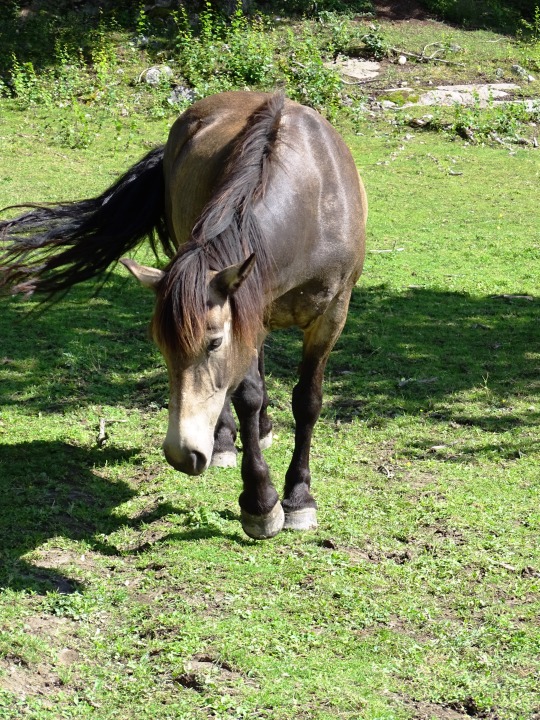



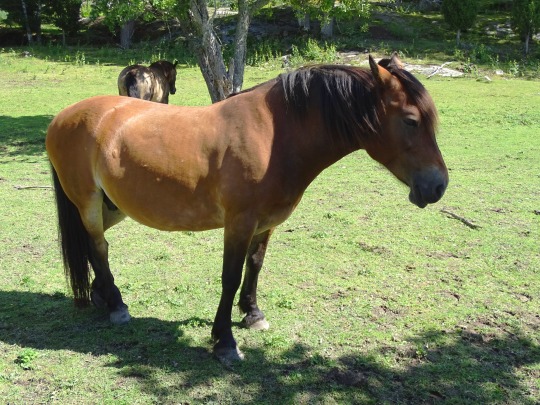
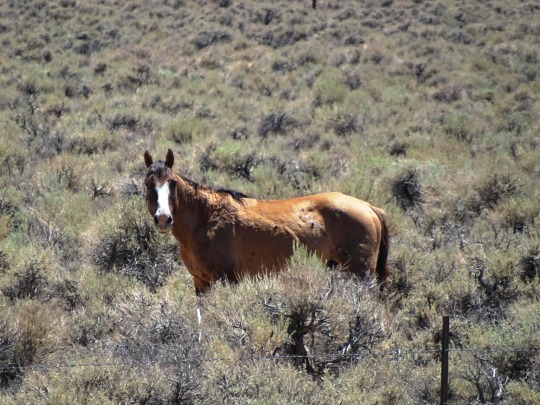

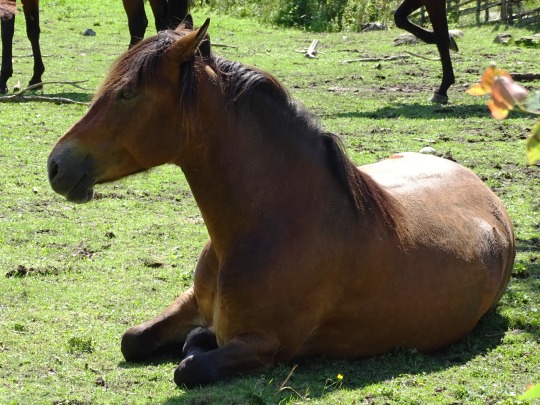



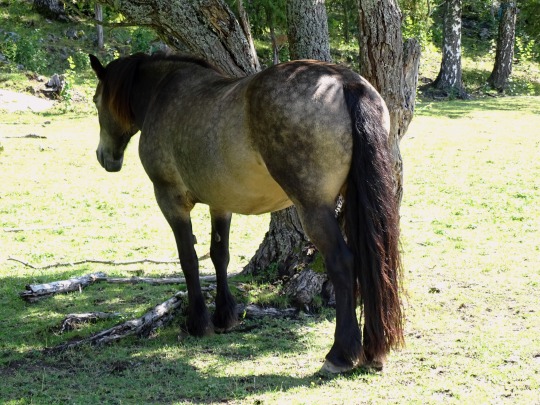

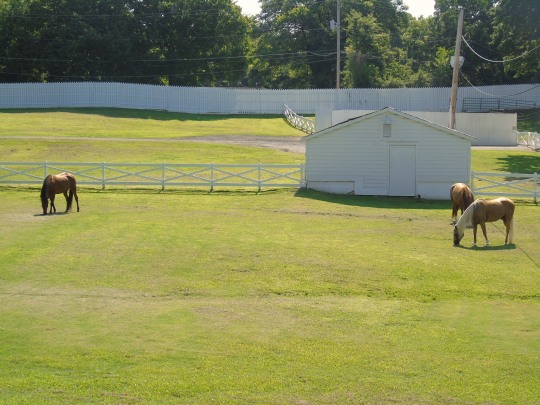
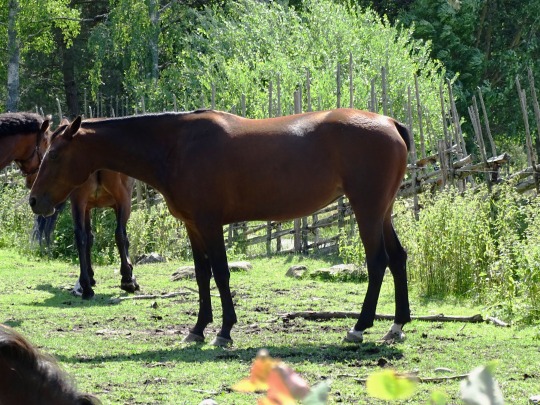



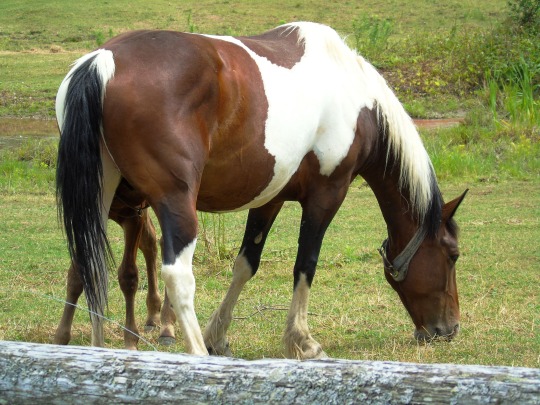
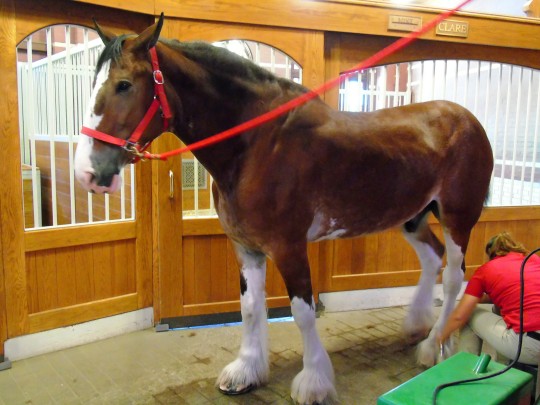
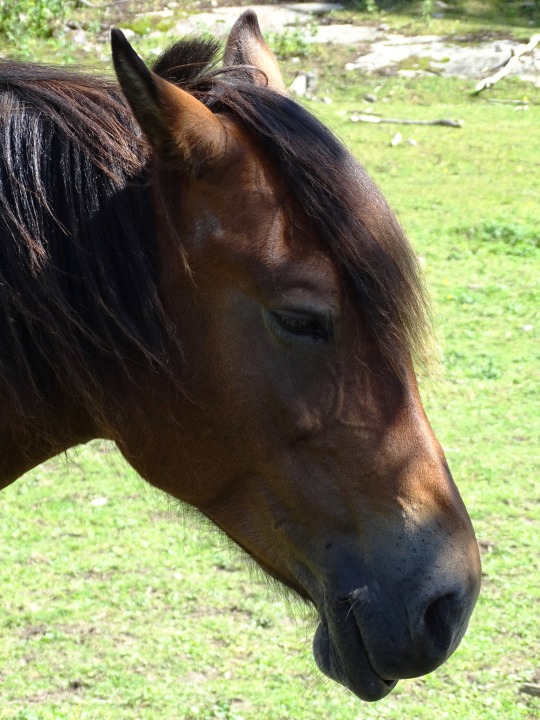

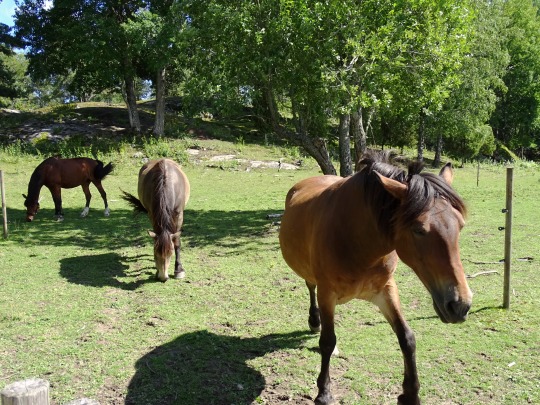

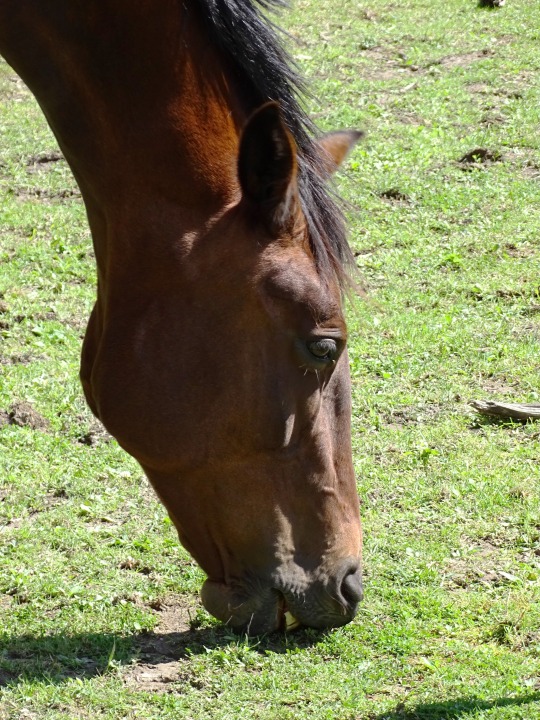

National Help A Horse Day
On of mankind’s closest companions, horses require lots of gentle, loving care to thrive, which is why horse lovers take part in National Help a Horse Day.
No horsing around – today is an opportunity for you to be a good ‘neeeiiigh-bor’ as it’s National Help A Horse Day! This important occasion aims to raise awareness of the struggles that equines all over the world face and contribute to efforts saving them from cruel and inhumane situations.
Horses are very distinctive animals, well known for their grace and beauty. While there over 300 different breeds, they can be grouped into three main types – “hot bloods”, which are fast and bold, “cold bloods”, which are strong and calm, and “warm bloods”, which are a blend of the two and tend to be good for riding.
They can be flighty animals and scare easily, which also means they’re able to sleep standing up in case a quick getaway is needed! A horse’s teeth are incredibly long and gradually emerge into the mouth (a process known as “erupting”) over the course of its life to replace what’s been ground down by chewing. And of course they’re excellent runners, able to move in a variety of gaits including trotting, cantering and full-out galloping!
History of National Help A Horse Day
Alongside the loyal dog, horses are often referred to as man’s best friend, and it’s no wonder! Over the course of human history, these majestic beasts have been the backbone of civilization and have done much of the heavy lifting in human endeavors, often literally!
Tamed around 5 millennia ago, equines have been crucial across a wide range of areas including transport, agriculture, warfare and ceremonial occasions. More recently they’ve also become a staple in the world of sport, have been used as therapy animals and, perhaps above all, have won many a heart as faithful companions.
And yet there is also a dark side to our history with horses, with mankind often treating these dedicated animals with cruelty and contempt. In recent years, stories of their neglect and abandonment have also continued to rise as some owners have found the cost of looking after them simply too much to cope with.
National Help A Horse Day was started by the American Society for the Prevention of Cruelty to Animals (ASPCA) in 2014, but its origin dates back much further to the creation of the ASPCA itself. It all started in 1863 when Henry Bergh, an American diplomat posted in Russia, saved a horse from being abused by a carriage driver. The owner responsible was arrested on 26 April that year for his mistreatment of the animal, the first time this had ever occurred, and Bergh went on to found the ASPCA in 1866. National Help A Horse Day therefore honors this significant date for the ASPCA and horses everywhere.
The society now hosts an annual Help a Horse Home Challenge to mark the occasion – the challenge is a nationwide competition for horse shelter and rescue centers, with the winners receiving a generous grant to further their work. And National Help A Horse Day has spread both in the US and internationally, with people all over the world celebrating these amazing equines and raising awareness of the cruelty and neglect they can be subject to.
Why horses need our help
Given their loyal and caring nature, it’s no surprise that horses are a popular pet. Yet due to their size and complex needs, they can be pretty expensive to care for. Sadly this leads to many horses being neglected or abandoned, sometimes by unfeeling owners but often by well-intentioned ones who simply no longer have the resources to cope. Neglected horses may lack the sustenance, shelter, medical treatment and enrichment they need for high-quality and fulfilled lives. Some may even be abandoned elsewhere and left to their own devices in a practice known as “fly-grazing”.
Pet horses are only part of the issue, however. Perhaps far more of a threat are unscrupulous breeders and dealers who churn out these animals by the dozen with only their pockets in mind and no thought for the horses’ welfare. This is why stricter animal protection laws and regulations are needed to prevent such heartless exploitation of these creatures.
Sport is another area in which horses can be maltreated – horse racing, for example, can be dangerous for the animals, with many put down if they are injured as they are then considered a mere expense. Similarly, working horses are at risk of abuse and exploitation, again by businesses determined to make a profit over all other considerations. Rescue centers and sanctuaries are therefore vital for helping horses, by saving them from harsh conditions and providing them with safe new homes.
The horse meat trade is another controversial area, with many opposed to its consumption. It’s illegal in various parts of the world, particularly the US, and over the years various concerns have been raised about the quality and source of the meat.
Wild horses are also at risk. Well-loved as a symbol of freedom, there are issues with how overpopulation is managed, with “mustangs” in the US often captured and placed in holding pens. Humane solutions are needed to ensure that wild equines can thrive as well as their domesticated counterparts.
How to celebrate National Help A Horse Day
National Help A Horse Day is your chance to make a real positive contribution to the care and protection of horses. Send a donation to an equine charity, sanctuary or rescue center of your choice or volunteer for one near you if you can spare the time! Another great way to bring about change is to sign petitions demanding better care for these faithful friends who have served us so well over the centuries.
If you come across a neglected or abandoned horse, then be sure to get in touch with a local animal welfare organization who will be able to rehabilitate and rehome it. And if you have the space and inclination, why not consider fostering or even adopting a horse yourself?
Take time out of your day to find out more about these charming creatures and the threats they face – be sure to share what you find out with family, friends, colleagues and your social media following so that many more people will be inspired to give vulnerable horses the help they need. Check out some of the many excellent horse documentaries available, such as Running Wild: The Life of Dayton O’Hyde, which follows a cowboy’s struggle to protect wild horses in the US, and Equus: Story of the Horse, which details mankind’s relationship with these animals over the years.
If you’re lucky enough to live near horses or perhaps even have a four-legged companion of your own, then National Help A Horse Day is a great opportunity to show them some extra love. Share an apple, carrot or sugar cube with a local horse you know and take them for a ride or trek (all with its owner’s permission of course!).Be sure to spread the word this National Help A Horse Day to give equines everywhere the best chance at a happy, healthy future. All they need is a helping hand (after all, most of them are already at least 10 hands high!) to enjoy a better life.
Source
#north Swedish horse#Tyresta National Park#Kings Landing Historical Settlement#Sweden#Canada#animal#travel#original photography#flora#fauna#nature#tourist attraction#Graceland#Memphis#National Help A Horse Day#NationalHelpAHorseDay#26 April#landscape#countryside#vacation#summer 2020#2015#2016#foal#USA#wild horse#Nevada#Ottawa#Mounties#RCMP
0 notes
Text
Publix Supermarkets and Taylor Sheridan's 666 Grit & Glory agree to 100-store trial.

Press Release
(Guthrie, TX-October 2023) The deep south is getting a taste of big ranch Texas, as Florida-based Publix Supermarkets plans to roll out a 100-store trial of Taylor Sheridan’s 6666 Grit & Glory line of premium beers, ranch water and vodka cocktails in select retail markets. The grocery giant just signed on to offer Grit & Glory products to customers in the Tampa and Orlando markets.
Publix Supermarkets joins other major retail brands offering the Grit & Glory line of beverages. A year after the brand’s launch, 6666 Grit & Glory products are a major hit with other national and regional retailers in 37 states including Kroger, Tom Thumb, Randall’s, Ralph’s, Marianos, Acme, Harris Teeter, Jewel Osco, Save Mart, Albertson, Target, Sprouts and HEB. A just-announced distribution agreement with Wal Mart will soon expand the brand’s presence nationwide to all 50 states, and 6666 Grit & Glory CEO Tom Larsen expects sales grow to $40 million in 2024, making it one of the fastest growing brands in the alcoholic beverage category. “We’re excited to expand and partner with Publix to make Grit & Glory products available to their customers in important markets like Tampa and Orlando,” said Larsen. “Publix is an iconic brand with an expanding footprint across the south—we know this trial is the start of something big.”
The “6666 Grit & Glory” brand was inspired by the famous Four Sixes Ranch, owned by Taylor Sheridan and David Glasser, creator and producer of the small-screen hit series “Yellowstone”. The 6666 brand’s swift emergence coincides with the buzz and popularity of Yellowstone and its ties to the Four Sixes Ranch as an integral part of the Yellowstone story line. The legendary 260,000-acre spread and its rich heritage serve as an important backdrop for the series, transporting the Yellowstone story and its characters from Montana south to Guthrie, Texas.
Sheridan and the Grit & Glory team plan to capitalize on the show’s popularity with co-branded promotions and retailer sweepstakes, including a just-announced sweepstakes with a walk-on role in one of Sheridan’s future productions focusing on the Four Sixes Ranch. The beverage line is just one more facet of Sheridan’s vision—making the Four Sixes Ranch a full circle brand offering products, entertainment and experiences to the public that resonate with the real flavors, textures and values of big ranch Texas and the authentic cowboy lifestyle. Known for producing prize quarter horses, cattle and hard-core cowboys for more than 150 years, the brand will soon add ready to drink cocktails to the product line up as they continue to build on the legacy of this iconic ranch. “With the shows, with the ranch, with Grit & Glory, I want people to get a sense of where the past and the future come together—it’s relatable. People get it and we want the Four Sixes to help tell that story.”
About Publix Supermarkets
With over 225,000 employees, Publix Super Markets is the world’s largest employee owned business. One of the ten largest volume supermarket chains in the country, Publix owns and operates 1,271 retail locations across the southeastern US. One of the best-performing companies in the grocery industry, Publix has continued to expand and open up new locations in recent years.
About Four Sixes Ranch
“Four Sixes” has been a working ranch dating to the 1870s. Now owned by hit series Yellowstone producers Taylor Sheridan and David Glasser, the 6666 ranch and its authentic western roots were the inspiration for the line of Grit and Glory craft alcohol beverages. The rich heritage of the legendary 260,000-acre spread is the backdrop for “6666”, transporting the Yellowstone story and its characters from Montana south to Guthrie, Texas. After purchasing the ranch, Sheridan and Glasser created the Grit and Glory line of beverages embodying the iconic brand and its storied past.
About 6666 Grit & Glory
Yellowstone creators Taylor Sheridan and Producer David Glasser partnered with L.A. Libations to create the Grit and Glory brand, a line of beverages and consumer products celebrating the iconic 6666 Ranch and the cowboy lifestyle. Amplified by the Yellowstone series, the “Four Sixes” and its authentic roots, Grit and Glory craft Pilsners, IPAs, Lagers, Ranch Waters and Ready to Drink Cocktails are resonating with beverage consumers and forging a connection the brand’s founders tapped into with the Yellowstone world and its 15 million fans.
#Taylor Sheridan#Yellowstone#Texas#TX#Publix Supermarkets#RTD#Ready to Drink#Craft Beer#Beer#Press Release#Four Sixes Ranch
0 notes
Text
I read this and so strongly agree with the position.
Horse health as a breeding goal - robbery or sustainability?
#Pferdezuchtberatung
Never before have there been as many elastic, riddled and highly predisposed horses in the history of horse breeding as in our time. Horse breeding has reached such a level as to the quality of movement of horses that the average rider can't even exploit half the potential of his four-legged sports partner. The small number of really good dressage trainers can choose an incredible number of top young horses from a wide mass of lace horses.
Basically, systematic, nationwide promotion of horse riding is needed to get the many great young horses on the right track in training.
Those who realize that breeding provides us with as many good horses as never before, but which cannot develop properly due to lack of training, should also wonder why it is constantly about breeding more and more spectacular horses.
The horses are good enough.
Donnerhall, Rubinstein, Ferro, Jazz - big names in breeding and sports that have proven over decades what high performance they and their descendants are capable of. Solid base of a true breeding progress and each of these studs - in his time - catalyst of a new stallion line, from previously known but still little used stallion lines.
These stamp stallions have impressed with consistency and performance and have grown into their top role as stamp stallions for decades due to the quality of their offspring.
Today the path is another - young stallions are marketed like pop stars, even before you can really know anything about their inheritance, hundreds of mares are already carrying, because everyone wants to be the first to have offspring in the stable from the new ′′ miracle boy There are many negative consequences:
Horses with gross foundation defects, front legs defects, peeps and other building defects produce a hundred times offspring because they are marketed by large companies like kings of their time. The rider and the audience heated the young stallions in part only three and four years old so that they completely expend themselves and show movement processes, which of course are stuck in them, but extremely overwhelming their back, ligament and tendon apparatus. As visitors to these events, one should consider that many horses are fully grown only at the age of 7 and only then can be assumed that the skeleton and soft tissue apparatus are fully sportily resilient. This is also why horses in Germany are allowed to start in the heavy class at the earliest as seven-year-olds. The spectators are cheering, but the young stallions, sometimes only 3 and 4, suffer from it, although they show their outstanding potential, but they cannot offset these large lever and support movements yet. Because it takes at least three to four years to strengthen a horse in a slow training so that the muscles allow the horse to balance the greatest swing and load absorption, without overloading the skeleton and soft tissues.
Gigolo, Rembrandt, Donnerhall, Valegro - symbols of greatest sports achievements and slow development. That's how it will always remain in top sports because there is no shortened path to the real destination.
Besides position errors, incorrect foundations and peeps, what do we see? Young horses with a stretched back, who are not yet matured enough, really really to take on load and horses that are in the stechtrab over the diagonal, so that they lift even ′′ world champion ′′ riders in the chair seat out of the saddle. Is this what we want? Or would we like to once again enjoy the graceful beauty and harmony and also align our breeding planning with it?
Of course there are fantastic horses at these events. But why does this have to end in a mass hysteria planned from the beginning? Does a young stallion have to be rushed out of the track with a crossed back to over loud music or could one also enjoy a loosely swinging, harmonious performance of a unit of rider and horse?
Then a platform would also be opened for those stallions, who are a little more late or who are trained with more expertise. This would benefit the breeding from an increasing variety of horses, because those who are the best horse really later in the big sport are not regularly shown at the beginning of their career.
Only excessive movement horses left to mate leads to a show horse breeding than a meaningful selection of hardness and durability.
Of course we need horses with a nice mechanic and elasticity, but this quality has already reached a very high standard.
In the early s, the best stallions at the time, such as Accent II, Freiherr, Rubinstein, Donnerhall and Landadel were printed in beautiful side pictures without saddle in the stallion brochures. Why is that? Because a performance-oriented breeding is too demanding to promote solid and balanced physique. The foundation, upper line and connection of the body areas make a significant contribution to the health of future horse generations. This must not be ignored. Reviewing horses on the asphalt again, without bandages and hoof bells. Seeing the saddle position in the side picture, without rider, all of this is enormously important for true breeding basic considerations. Everything else is pure foal production for fast profit. Ultimately, just a mere increase at the expense of population health. Breeding should be a constant process of improvement and refinement, too foremost in the sense of the well-being of the animals themselves and in the second step for better usability.
We don't need horses with long-bred front legs, little correctness to position errors and hardly any back work.
We need breeders again who dare to go a new path, once again to rely on rare genes and thus open up the opportunity to open a new stud line again and again.
Those who make up their breeding choices only by the opinion of a wide crowd have to adapt to a new trend every year and also always compete with a mass of others doing exactly the same thing, a unique selling feature will never be able to develop.
Driving across the country, meeting breeders, watching stallion mothers live and judging offspring in the meadow - breeding romance from the nineties, with all the fascination that only arises when talking coffee with the old breeders in the stable.
If we breeders also transport this desire, we might also spare one or the other young stallion from having to compete within just 10 days at three different large events - distributed throughout Europe. Maybe some young stallion will do something more ′′ horse ′′ can also be quite good.
Please think about it and dare to try something new again.
By : André Hascher
91 notes
·
View notes
Text
Making My Familiar Trashcan “Unfamiliar”

At least once a day, I press down on the pedal of this trashcan and fill it with any waste I see around me. From containing left over food, to hiding the contents of my small vacuum, my little trash can sitting under my bed does it all. Once a week in my hometown neighborhood, trash is collected into a large truck and while some is exterminated, others are recycled. I always found this arrangement of getting rid of excess product beneficial as it’s a quick way to reduce cluster. While dorm shopping, I actually almost forgot to grab this trashcan for my own personal use. My mom so happened to find it in the wrong aisle in Target and put it into the cart without my knowledge. When I saw the it in the cart, I sighed with relief, but what truly was this relief? Not once did I stop to think, “What would I do without this trash can?!”…until today.
The very first garbage can was developed by Eugene Poubelle; its original use was for ashes of burnt garbage. However, it became more convenient for horse-drawn carts to pick up the garbage and transport it to several hundred incinerators nationwide. As motorized vehicles became popular, they replaced horse-drawn carts. France hopped on this idea, establishing the “Poubelle Law” in 1883, which called for the use of closed disposal waste containers. Daily disposal of waste became the law and seperation of waste became vital. One bin indicated perishables, a second container was used for paper and cloth, and the third receptacle was for glass. Charles Harrison, an African- American industrial product designer, is the Father of the plastic garbage can, which came later on in the 1930s.(https://www.plasticmill.com/blogs/plasticmill/who-invented-the-trash-can)
Previous to Poubelle's invention, waste receptacles have been used dating back to 200 A.D. in early civilizations, but unlike today's load of paper and plastic use, they were not really necessary. Romans designed the first "Sanitation Organization", where two men would pick up trash off the streets to be taken into a wagon that deposited the trash away from the area. In the 1350s, England rakers, known as the first garbage men, had a similar job; they too had to rake the trash once a week into piles that would be dumped into two rivers. The first trash waste management system had not developed in America until 1914. Ben Franklin had the idea of filling holes in the ground with trash and before Yellow Fever had spread in Texas, this was the way of life. (https://www.plasticmill.com/blogs/plasticmill/who-invented-the-trash-can)
Today, the trash can is vital for society to maintain a healthy environment. Without it, streets would be cluttered with waste, and conditions would be highly unhealthy. I recall the days where I would see ads encouraging the use of trash cans on beaches, because plastic rings would be found around turtles shells, or birds' beaks. When waste is improperly stored, there are possibilities of unwelcoming scavengers into homes and even deaths of animals.
The manufacturer of my household's trash can is Simplehuman, which is a minimalist brand, looking to improve peoples' lives with the use of their trash cans (https://www.simplehuman.com/pages/trash-can). Frank Yang, the founder, began producing these trashcans in the 2000s, making revenue of $220 million by 2018. Native to Taiwan, Yang says he "saw trashcans that looked good, but didn’t function. I(he) set out to change this". Manufactured from California, Simplehuman began producing motion sensored and voice activated trashcans in 2010.
"Somehow simplehuman turned something tedious into an enjoyable and interactive experience"(https://www.forbes.com/sites/meggentaylor/2018/09/28/from-technologizing-the-trashcan-to-reinventing-the-mirror-the-evolution-of-simplehuman/?sh=64a8c1a37a16).
3 notes
·
View notes
Text
Affordable Horse Transport in California | Rocking Y Ranch
Do you need to transport your horse within California? Rocking Y Ranch provides cost-effective Horse transportation solutions in California. Our experienced team and dependable trailers ensure your horse's safety and comfort throughout the trip.
Contact us today to get a competitive quote and hassle-free equine relocation.
#nationwide horse transportation#horse hauling companies#horse trailering california#horse shipping california
0 notes
Text

Usa transportation logistics
Blue Horse Logistics is a premier USA transportation and logistics company specialising in efficient, reliable freight solutions. We offer comprehensive services including freight forwarding, warehousing, and supply chain management. Our commitment to innovation and customer satisfaction ensures timely deliveries and seamless logistics for businesses nationwide. Trust Blue Horse for your logistics needs.
Visit us:-
https://bluehorselogistics.net
1 note
·
View note
Text
Tuesday, September 5, 2023
For Politicians, Vacations Can Be a Lot of Work (NYT) Labor Day weekend, once the official kickoff of campaign season, now comes almost a year after most candidates have hit the trail and after the first primary debate. The occasion lays out a basic fact of modern presidential campaigns: Politicians need vacations, too. But while taking a break can create an opportunity for campaigns to show that their candidates are just like the rest of us, it also carries potential peril. The “right” vacation can give a candidate time to rest and recharge, to reconnect with family after weeks on the road, and a chance to look presidential while doing it. A tone-deaf vacation—too elite, too disconnected, too much beach bod—is tabloid catnip and can alienate voters. And the wrong vacation can upend a campaign faster than a wave topples a windsurfer. So it’s no surprise that the presidential candidates this year, by and large, are lying low. While most of the 2024 candidates have chosen to emphasize that they are at work rather than at play, vacations were once seen as an opportunity to burnish a politician’s image. Ronald Reagan chopped wood and rode horses at his California ranch. George W. Bush cleared brush in Texas. John F. Kennedy, perhaps the embodiment of the artful presidential vacation, sailed. Stories of vacations restoring the candidate but tanking the campaign are many. When Michael S. Dukakis, the Democratic nominee for president, went on vacation in late August 1988, he was seen by some as checking out of the race as George H.W. Bush gathered momentum from the Republican convention. Mr. Dukakis was also once pilloried for reading a book called “Swedish Land Use Planning” on the beach.
Home insurers cut natural disasters from policies as climate risks grow (Washington Post) In the aftermath of extreme weather events, major insurers are increasingly no longer offering coverage that homeowners in areas vulnerable to those disasters need most. At least five large U.S. property insurers—including Allstate, American Family, Nationwide, Erie Insurance Group and Berkshire Hathaway—have told regulators that extreme weather patterns caused by climate change have led them to stop writing coverages in some regions, exclude protections from various weather events and raise monthly premiums and deductibles. Major insurers say they will cut out damage caused by hurricanes, wind and hail from policies underwriting property along coastlines and in wildfire country, according to a voluntary survey conducted by the National Association of Insurance Commissioners, a group of state officials who regulate rates and policy forms. Insurance providers are also more willing to drop existing policies in some locales as they become more vulnerable to natural disasters.
Faced With Evolving Threats, U.S. Navy Struggles to Change (NYT) A symphony of sorts echoed through the sprawling shipyard on the Gulf Coast of Mississippi — banging, hissing, beeping, horns, bells and whistles—as more than 7,000 workers hustled to fill orders fueled by the largest shipbuilding budget in the Navy’s history. The surge in spending, $32 billion for this year alone, has allowed the Huntington Ingalls shipyard to hire thousands of additional people to assemble guided missile destroyers and amphibious transport ships. But the focus from Washington on producing a stream of new warships is also creating a fleet that some inside the Pentagon think is too wedded to outdated military strategies and that the Navy might not be able to afford to keep running in decades to come. Half a world away, at a U.S. Navy outpost in Bahrain, a much smaller team was testing out a very different approach to the service’s 21st-century warfighting needs. Bobbing in a small bay off the Persian Gulf was a collection of tiny unmanned vessels, prototypes for the kind of cheaper, easier-to-build and more mobile force. Operating on a budget that was less than the cost of fuel for one of the Navy’s big ships, Navy personnel and contractors had pieced together drone boats, unmanned submersible vessels and aerial vehicles capable of monitoring and intercepting threats over hundreds of miles of the Persian Gulf, like Iranian fast boats looking to hijack oil tankers. Now they are pleading for more money to help build on what they have learned. The Navy’s top brass talks frequently about the need to innovate to address the threat presented by China. The Defense Department’s own war games show that the Navy’s big-ship platforms are increasingly vulnerable to attack. But the Navy, analysts and current and former officials say, remains lashed to political and economic forces that have produced jobs-driven procurement policies that yield powerful but cumbersome warships that may not be ideally suited for the mission it is facing.
Security in Ecuador has come undone as drug cartels exploit the banana industry to ship cocaine (AP) Men walk through a lush plantation between Ecuador ‘s balmy Pacific coast and its majestic Andes, lopping hundreds of bunches of green bananas from groaning plants twice their height. Workers haul the bunches to an assembly line, where the bananas are washed, weighed and plastered with stickers for European buyers. Owner Franklin Torres is monitoring all activity on a recent morning to make sure the fruit meets international beauty standards—and ever more important, is packed for shipment free of cocaine. Torres is hypervigilant because Ecuador is increasingly at the confluence of two global trades: bananas and cocaine. The South American country is the world’s largest exporter of bananas, shipping about 6.5 million metric tons (7.2 tons) a year by sea. It is also wedged between the world’s largest cocaine producers, Peru and Colombia, and drug traffickers find containers filled with bananas the perfect vehicle to smuggle their product. Drug traffickers’ infiltration of the industry that is responsible for about 30% of the world’s bananas has contributed to unprecedented violence across this once-peaceful nation.
Subway, train lines, roads closed in Madrid, central Spain after heavy rain (Reuters) A few subway lines in Madrid and high-speed train connections with southern cities were closed on Monday morning and two men were missing after torrential rain hit central Spain. Emergency services were involved in almost 1,200 incidents in the region overnight. Several roads in the Madrid region were closed as half a dozen bridges were torn down by water overflowing the riverbanks. The sudden torrential rain that hit the country transformed streets into rivers in Madrid, Castile, Catalonia and Valencia regions.
Albanian exodus (Les Echos/France) Since the fall of communism in 1991, the small Balkan state has been slowly but inexorably emptying itself, at the pace of incessant waves of emigration. With an aging and declining population and a birth rate in free fall, it is facing all kinds of challenges. One constant, however: every year, some 50,000 people, most of them between 18 and 40 years old, leave in search of a better life. Albania is paying a high price for this exodus, particularly in terms of economic development. “One of my developers left for Facebook in Ireland, another for Worldplay. It took me months to replace them. We’re offering them salaries 10 times higher," says Bora Ferri, who founded a small payment company, Mpay, ten years ago, and is also head of the France-Albania Chamber of Commerce and Industry.
Zelensky fires his defence minister (BBC) Even as there are suggestions Ukraine's painstaking counter-offensive might be poised to gather pace, its defence minister has been sacked, with President Volodymyr Zelensky saying it was time for "new approaches" in the ministry. Oleksii Reznikov was credited with convincing Western powers to supply arms but his department was hit by corruption scandals. It's unlikely to lead to a change in battlefield strategy, with generals claiming they have breached Russia's formidable first line of defences in the south. The push has focused on the tiny village of Robotyne, 56km (35 miles) south-east of the city of Zaporizhzhia, where forces are trying to widen the gap so larger units can pass through without coming under fire.
Upward of 20,000 Ukrainian amputees face trauma on a scale unseen since WWI (AP) The small band of soldiers gather outside to share cigarettes and war stories, sometimes casually and sometimes with a degree of testiness over recollections made unreliable by their last day fighting, the day the war took away their limbs. Some clearly remember the moment they were hit by anti-tank mines, aerial bombs, a missile, a shell. For others, the gaps in their memories loom large. Ukraine is facing a future with upward of 20,000 amputees, many of them soldiers who are also suffering psychological trauma from their time at the front. Europe has experienced nothing like it since World War I, and the United States not since the Civil War.
The Never-Ending Nightmare of Ukraine’s Dam Disaster (NYT) Sunset along the Kakhovka Reservoir in central Ukraine, especially in summer, used to be gorgeous: kids played in the shallow water near the shore, men fished and young couples walked under the pine trees as the last traces of sunlight reflected off the water. But after the destruction of a major dam just downriver, that shimmering lake, one of Europe’s biggest, simply disappeared. Now all that remains is a 150-mile-long meadow. For 60-plus years, the Bezhan family ran a fishing business on these shores. They bought boats, nets, freezers and enormous rumbling ice-making machines, and generation after generation made a living off the fish. But now there are no fish. Scientific evidence indicates that the dam was blown up from the inside. In one stroke, they unleashed epic floods on Ukraine and an ensuing drought that, taken together, brought a stunning level of destruction to the environment, the economy and the lives of civilians already enduring the hardships of war.
China to Its People: Spies Are Everywhere, Help Us Catch Them (NYT) Beijing sees forces bent on weakening it everywhere: embedded in multinational companies, infiltrating social media, circling naïve students. And it wants its people to see them, too. Chinese universities require faculty to take courses on protecting state secrets, even in departments like veterinary medicine. A kindergarten in the eastern city of Tianjin organized a meeting to teach staffers how to “understand and use” China’s anti-espionage law. China’s Ministry of State Security, a usually covert department that oversees the secret police and intelligence services, has even opened its first social media account, as part of what official news media described as an effort at increasing public engagement. Its first post: a call for a “whole of society mobilization” against espionage. “The participation of the masses,” the post said, should be “normalized.” China’s ruling Communist Party is enlisting ordinary people to guard against perceived threats to the country, in a campaign that blurs the line between vigilance and paranoia. The country’s economy is facing its worst slowdown in years, but China’s authoritarian leader, Xi Jinping, appears more fixated on national security and preventing threats to the party’s control.
In China’s shadow, U.S. rushes back to neglected Indian Ocean island (Washington Post) At the height of the Cold War, the U.S. Air Force tracking station that monitored Soviet satellites from this island’s soaring tropical forests was a focus of Seychelles life. The American servicemen and technicians living nearby hosted barbecues and bar nights to which all Seychellois were invited, distributed cookies and milk to local children and taught them basketball. Then, the Cold War ended, the Soviet Union collapsed and in 1996 the Americans left, dismantling the tracking station and shutting down their embassy—citing budgetary reasons for abandoning what had seemingly become an irrelevant corner of the world. Today, the compound where Americans and Seychellois partied is home to the Seychelles Tourism Academy, where young islanders training to be tour guides, hoteliers and masseuses take classes, among other subjects, in Chinese—just one small manifestation of a new geopolitical rivalry that has now lured the Americans back. In June, Seychelles became the latest in a string of small nations around the world in which the United States has established, restored or is planning to open an embassy as part of a broad pushback against the influence China has acquired during more than two decades of neglect or disinterest on the part of the United States.
0 notes
Photo










National Help A Horse Day
On of mankind’s closest companions, horses require lots of gentle, loving care to thrive, which is why horse lovers take part in National Help a Horse Day.
No horsing around – today is an opportunity for you to be a good ‘neeeiiigh-bor’ as it’s National Help A Horse Day! This important occasion aims to raise awareness of the struggles that equines all over the world face and contribute to efforts saving them from cruel and inhumane situations.
Horses are very distinctive animals, well known for their grace and beauty. While there over 300 different breeds, they can be grouped into three main types – “hot bloods”, which are fast and bold, “cold bloods”, which are strong and calm, and “warm bloods”, which are a blend of the two and tend to be good for riding.
They can be flighty animals and scare easily, which also means they’re able to sleep standing up in case a quick getaway is needed! A horse’s teeth are incredibly long and gradually emerge into the mouth (a process known as “erupting”) over the course of its life to replace what’s been ground down by chewing. And of course they’re excellent runners, able to move in a variety of gaits including trotting, cantering and full-out galloping!
History of National Help A Horse Day
Alongside the loyal dog, horses are often referred to as man’s best friend, and it’s no wonder! Over the course of human history, these majestic beasts have been the backbone of civilization and have done much of the heavy lifting in human endeavors, often literally!
Tamed around 5 millennia ago, equines have been crucial across a wide range of areas including transport, agriculture, warfare and ceremonial occasions. More recently they’ve also become a staple in the world of sport, have been used as therapy animals and, perhaps above all, have won many a heart as faithful companions.
And yet there is also a dark side to our history with horses, with mankind often treating these dedicated animals with cruelty and contempt. In recent years, stories of their neglect and abandonment have also continued to rise as some owners have found the cost of looking after them simply too much to cope with.
National Help A Horse Day was started by the American Society for the Prevention of Cruelty to Animals (ASPCA) in 2014, but its origin dates back much further to the creation of the ASPCA itself. It all started in 1863 when Henry Bergh, an American diplomat posted in Russia, saved a horse from being abused by a carriage driver. The owner responsible was arrested on 26 April that year for his mistreatment of the animal, the first time this had ever occurred, and Bergh went on to found the ASPCA in 1866. National Help A Horse Day therefore honors this significant date for the ASPCA and horses everywhere.
The society now hosts an annual Help a Horse Home Challenge to mark the occasion – the challenge is a nationwide competition for horse shelter and rescue centers, with the winners receiving a generous grant to further their work. And National Help A Horse Day has spread both in the US and internationally, with people all over the world celebrating these amazing equines and raising awareness of the cruelty and neglect they can be subject to.
Why horses need our help
Given their loyal and caring nature, it’s no surprise that horses are a popular pet. Yet due to their size and complex needs, they can be pretty expensive to care for. Sadly this leads to many horses being neglected or abandoned, sometimes by unfeeling owners but often by well-intentioned ones who simply no longer have the resources to cope. Neglected horses may lack the sustenance, shelter, medical treatment and enrichment they need for high-quality and fulfilled lives. Some may even be abandoned elsewhere and left to their own devices in a practice known as “fly-grazing”.
Pet horses are only part of the issue, however. Perhaps far more of a threat are unscrupulous breeders and dealers who churn out these animals by the dozen with only their pockets in mind and no thought for the horses’ welfare. This is why stricter animal protection laws and regulations are needed to prevent such heartless exploitation of these creatures.
Sport is another area in which horses can be maltreated – horse racing, for example, can be dangerous for the animals, with many put down if they are injured as they are then considered a mere expense. Similarly, working horses are at risk of abuse and exploitation, again by businesses determined to make a profit over all other considerations. Rescue centers and sanctuaries are therefore vital for helping horses, by saving them from harsh conditions and providing them with safe new homes.
The horse meat trade is another controversial area, with many opposed to its consumption. It’s illegal in various parts of the world, particularly the US, and over the years various concerns have been raised about the quality and source of the meat.
Wild horses are also at risk. Well-loved as a symbol of freedom, there are issues with how overpopulation is managed, with “mustangs” in the US often captured and placed in holding pens. Humane solutions are needed to ensure that wild equines can thrive as well as their domesticated counterparts.
How to celebrate National Help A Horse Day
National Help A Horse Day is your chance to make a real positive contribution to the care and protection of horses. Send a donation to an equine charity, sanctuary or rescue center of your choice or volunteer for one near you if you can spare the time! Another great way to bring about change is to sign petitions demanding better care for these faithful friends who have served us so well over the centuries.
If you come across a neglected or abandoned horse, then be sure to get in touch with a local animal welfare organization who will be able to rehabilitate and rehome it. And if you have the space and inclination, why not consider fostering or even adopting a horse yourself?
Take time out of your day to find out more about these charming creatures and the threats they face – be sure to share what you find out with family, friends, colleagues and your social media following so that many more people will be inspired to give vulnerable horses the help they need. Check out some of the many excellent horse documentaries available, such as Running Wild: The Life of Dayton O’Hyde, which follows a cowboy’s struggle to protect wild horses in the US, and Equus: Story of the Horse, which details mankind’s relationship with these animals over the years.
If you’re lucky enough to live near horses or perhaps even have a four-legged companion of your own, then National Help A Horse Day is a great opportunity to show them some extra love. Share an apple, carrot or sugar cube with a local horse you know and take them for a ride or trek (all with its owner’s permission of course!).Be sure to spread the word this National Help A Horse Day to give equines everywhere the best chance at a happy, healthy future. All they need is a helping hand (after all, most of them are already at least 10 hands high!) to enjoy a better life.
Source
#wildhorse#Nevada#Tyresta nationalpark#Stockholm County#Sweden#USA#summer 2020#2022#Graceland#Tennessee#Memphis#travel#animal#Kings Landing Historical Settlement#New Brunswick#Canada#2015#National Help A Horse Day#NationalHelpAHorseDay#26 April#North Swedish Horse#tourist attraction#flora#fauna#meadow#vacation
1 note
·
View note
Text
KINGDOM COME: Writing Excerpt (”Down the Path of Penance”)

Another night of inspiration, another piece released. Albeit much shorter than my last excerpt, this touches on an important subject: the dichotomy between the newfound prince and the once-princess. The intent here was to work on their dynamic, balancing between the bickering and bantering siblings often switch between on a dime, and divulge more of this nation’s mysteries.
Did it work? Let me know! For now, kick back and read on...
___
EXCERPT DETAILS:
PROJECT: Kingdom Come CHAPTER: Royan VII (The Undying) CHARACTERS: - Royan Godewine: Norian prince, knight captain, reluctant heir to the throne - Sigrid Godewine: Former princess, adoptive sister to Royan, daughter of the now-deceased king SETTING: - The Path of Penance: The primary street leading from the city gate to the Waymaker Cathedral at the capital’s heart - Almsgard: A fortress city built into a mountain that serves as the capital of Norire - Norire: One of the seven kingdoms who lost their king in the last war CONTEXT: - On the morning of a nationwide memorial service for their fallen king, Royan and Sigrid prepare to transport the casket down the Path of Penance
CONTENT WARNING(S): Referenced Character Death
___
Had it not been for the diadem weighing down his own hair, Royan would not have realized: Sigrid had traded her veil for a crown.
Although their king left no widow in his wake, Norian culture dictated that the next of kin would instead take up the mourning wear in their parent’s stead. For Sigrid, it meant swallowing her pride and slipping into a gown as gray as the grave. Like the smoke of a funeral pyre, Royan thought, the echoes of their childhood history lessons coming back to him now. Like the ash left behind in the fire’s wake.
The image of Sigrid in steel and silver had become such a common sight that this dress seemed all the more drab in comparison. Even the wolf pelt draped about her shoulders could not salvage her visage. What did it matter? The absence of a veil left few eyes looking elsewhere.
“You know,” Royan said, with an upward gaze and upturned lips, “this is the one time I can say ‘no one wants to see your face��� and you don’t have the right to beat me up. You’re sort of stealing my thunder here!”
Sigurd snorted. “No one would be staring at your ugly mug either way.” Her horse chose then to swat him with its tail, in unspoken cahoots with its caretaker. “But if you mean the veil, I won’t be wearing it.”
“Oh, now I see,” Royan replied, propped up against the makeshift casket. “You have a death wish!” He slapped the stone beneath him until it sang in agreement. “Good thing there’s room: we’ll have to squeeze you in. If Mom doesn’t throw you to the wolves herself.”
“She might have,” Sigrid agreed, “had it not been her idea.”
“...pardon?”
“Your mother decided to send a message: that it was time our kingdom moved on. For five years now, they’ve stood still, waiting for some savior to say they can keep going without their old king.”
His sister turned to him, perhaps for the first time that day. It must have been, for how else would he have missed the conviction and contrition, each smoldering like embers in her eyes? “Haven’t you noticed? Noticed the...the nothing in them!? How their tears freeze before they leave their face, hands numb to the ones they hold. Our people have forgotten how to feel, Royan!”
Sigrid confronted the crowd awaiting their grief-stricken royal, defiant and dignified. “I won’t deprive them of a princess in pain. No, they will see what it means to weep and walk forward.” In a whisper, almost too soft to be anything but a prayer, she said, “I only hope they follow in my footsteps...”
And then, she pressed on.
#writing excerpt#original writing#amwriting#my writing#creative writing#writeblr#writeblr community#writers of tumblr#writers on tumblr#writing#kingdom come#royan godewine#sigrid godewine
67 notes
·
View notes
Text
not to beat the dead horse, but i’m STILL thinking abt the “my girlfriend turned out to be a member of a nazi blood cult, so give me 1500 dollars” thing bc
allegedly the cult is “nationwide” and “sacrifices jews on stone altars”, which implies......... they have stone altars scattered all across america?
that’s a lot of stone altars. or maybe they have a bunch and just transport them back and forth, but that would be hard to organize and even harder to keep in secret. but the same goes for making their own stationary altars. lots of people in the us. someone would inevitably stumble upon a blood-covered stone altar and call the cops.
and from my research i kinda doubt they’re re-appropriating pre-existing stone altars made by various native tribes, because................ well................... from what i know their rites either didn’t require altars (since they often lived a somewhat-nomadic life, and carrying a huge stone around is just not easy) OR they wouldn’t just let some outsiders use their stones for their own, murderous, cult practices.
and finally, there’s the fact there are stone altars in churches - but /do/ those guys use churches as their meet-and-bleed spots? is the catholic church involved? HOW DEEP DOES THIS CONSPIRACY GO?
i am very sorry for getting THIS fixated on this thing, but it’s been SO long since we last got a good, ol’-fashioned, outlandish story like this and i am THRILLED to be a part of this situation. also i’ve been binging horror youtubers for the past few days, and it shows.
7 notes
·
View notes
Text
Nationwide Horse Transport Services in California | Rocking Y Ranch
Rocking Y Ranch provides dependable nationwide horse transportation via experienced drivers and safe, well-maintained trailers. Whether you're moving across the country or across state lines, we'll transport your horse with care. Contact Rocking Y Ranch for a stress-free horse transport experience nationwide.
Learn More at -https://rockingyranch.com/
#horse shipping california#nationwide horse transportation#Nationwide horse transport#horse hauling companies
0 notes
Photo


Kentucky Auto Transport Services
Kentucky: Viceroy makes shipping a car to or from Kentucky easy with nationwide auto transport services available in Louisville, Lexington, Bowling Green, Owensboro, Covington, Hopkinsville, Richmond, Florence, Georgetown, Henderson, Elizabethtown, Nicholasville, Jeffersontown, Frankfort, Paducah, Independence, Radcliff, Ashland, Madisonville, and surrounding areas.
Viceroy specializes in Kentucky vehicle hauling, from state to state and door to door shipping is available on most routes to and from Kentucky. Your vehicle would be 100% full insurance protected coverage during shipping to or away from Kentucky. We connect you direct to the driver hauling your car and also provide a dispatch department ready to assist with any questions or concerns while your car is in transport to or from Kentucky.
Learn More About Kentucky Car Shipping
Kentucky is a southeastern state bounded by the Ohio River in the north and the Appalachian Mountains in the east, with Frankfort the state capital. The state's largest city, Louisville, is home to the Kentucky Derby, the renowned horse race held at Churchill Downs on the first Saturday in May. The race is preceded by a 2-week festival and celebrated in the Kentucky Derby Museum year-round.
youtube
4 notes
·
View notes